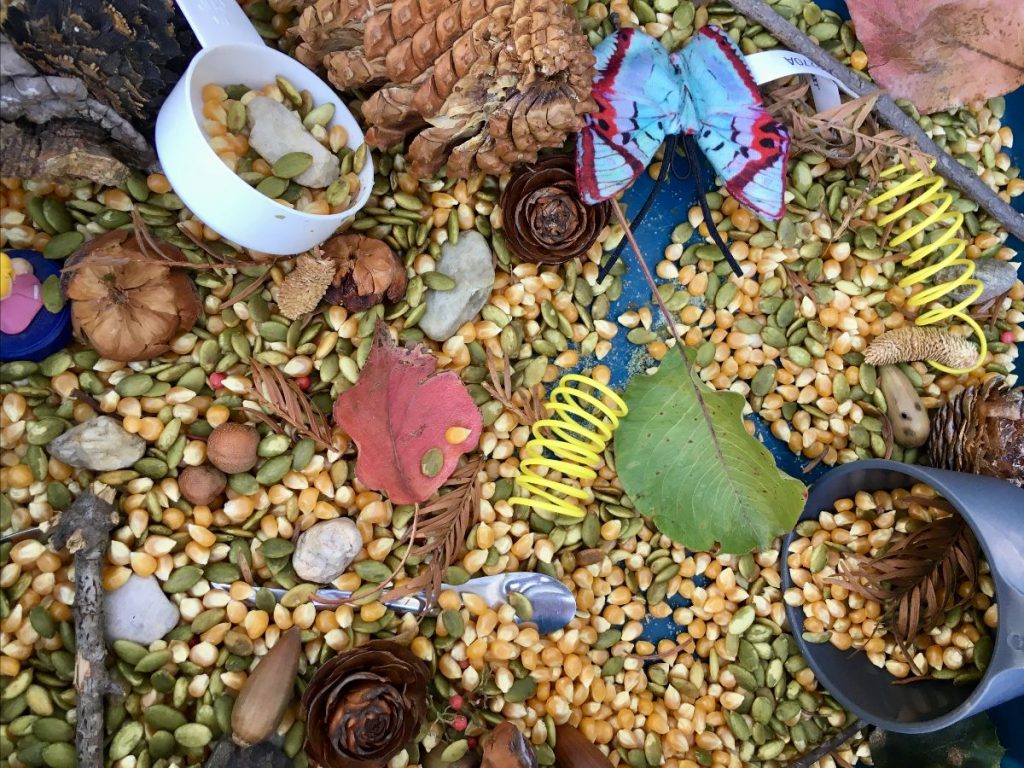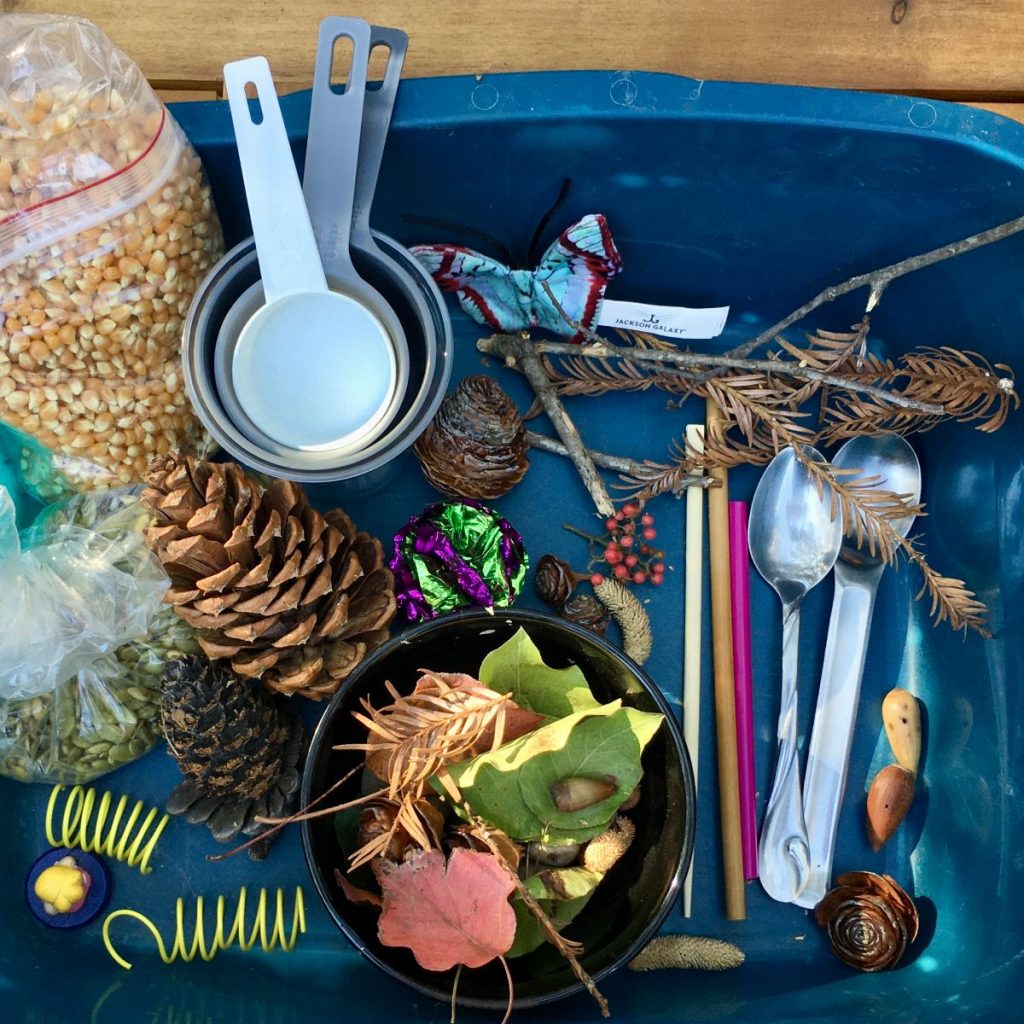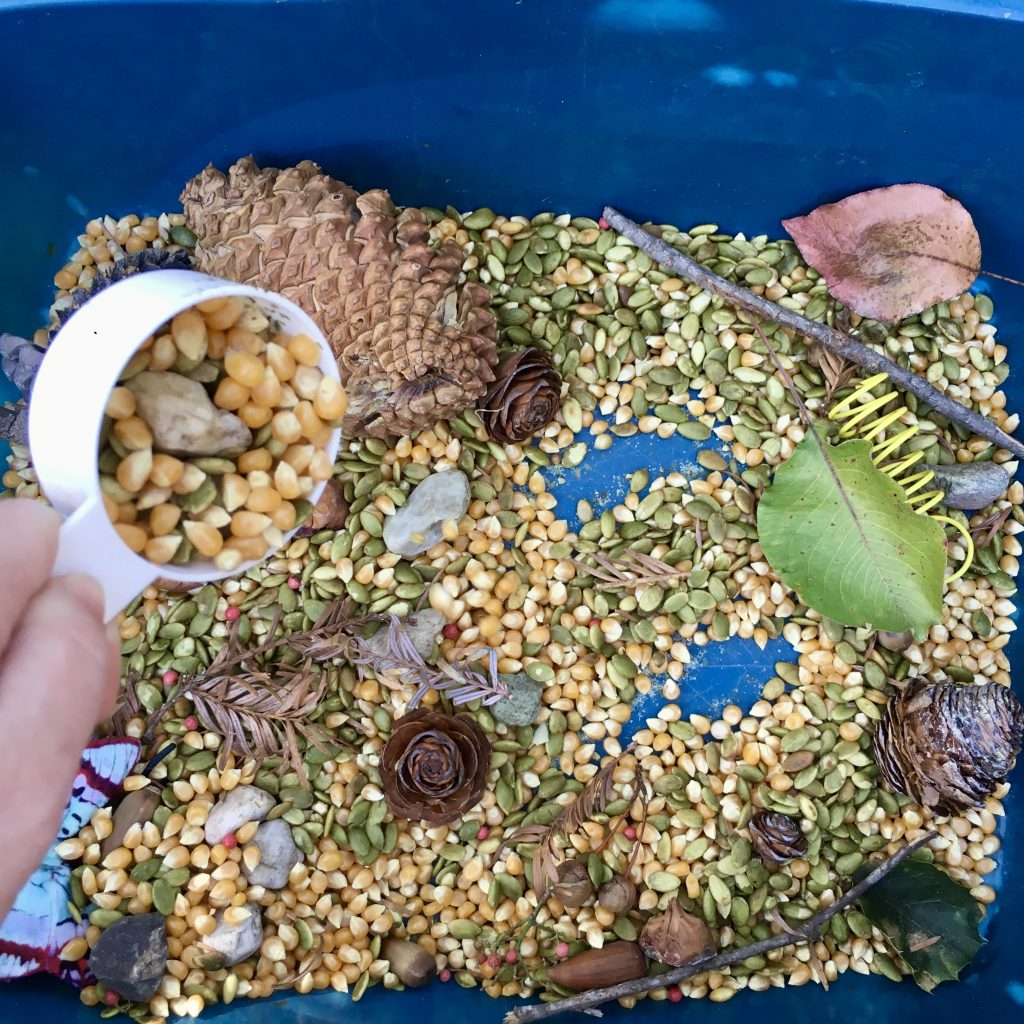(Disclaimer: This page contains Amazon affiliate links. If you make a purchase from one of the links, Habitot will receive a small commission at no extra cost to you.)

Gather colorful, textured, and fragrant materials from nature and from your home to create an autumn-themed sensory bin. Sensory play supports brain and motor development by encouraging experimentation, problem solving, and scientific thinking.
What We’re Learning & Skills We’re Building
- Sensory development – learning what certain materials feel, smell, sound, and look like
- Experimentation – using tools in varying ways to learn about what they can do
- Conservation of volume – pouring a material from one cup into another cup of a different size and seeing how the same amount looks different depending on the size/shape of the cup
- Descriptive vocabulary – learning words to describe how objects feel, smell, sound, and look
Safety: Monitor children under 4 so they don’t put small objects in their mouths, noses, and/or ears. For younger children, check out these baby- and toddler-safe sensory play ideas.

Materials
- Container: Shallow bin, bucket, or box (alternative: large baking sheet with high sides)
- Base material: 3-5 cups of dry rice, dry beans, seeds, popcorn kernels, sand, etc.
- Natural materials to collect: Fallen leaves, pebbles, acorns, pine cones, grass, smooth twigs, etc.
- Scoopers: Plastic drinking cups, measuring cups, spoons, tupperware, jar lids, small shovels, etc.
Optional & Suggested Materials
- Autumnal items: Cinnamon sticks, mini pumpkins, corn husks, etc.
- Craft materials: Feathers, pipe cleaners, balled-up tissue paper, etc.
- Safe tools: Child-safe tweezers, tongs, plastic magnifying glass, funnels, etc.
- Toilet paper and paper towel rolls
- Small toys
Setting Up & Getting Started
Cover the bottom of the container with the base material (cited above), then add the natural materials, the autumnal items, and other fun/safe objects (see Optional & Suggested Materials also above). Add the scoopers and the tools all at once, or introduce them one by one as your child explores the sensory bin. Let them play and experiment (safely) with the bin in an open-ended, child-led manner.

Prompts for Exploring, Playing, & Learning
- Encourage your child to describe how some of the materials feel, smell, sound, and look. Ask, “What does the base material feel like in your hand? What sound does it make when it moves? What do the leaves and twigs smell like? What do they look like?” Introduce descriptive vocabulary, such as “smooth,” “rough,” “dry,” “rattling,” “earthy,” etc.
- Say, “Tell me about what you’re doing with the scooper (or tongs, etc.).” If a tool isn’t working – like a funnel getting clogged – ask, “What can you use to fix it?”
- Scoop up some of the base material in one cup, then pour all of it into a different-sized cup. This is an early exploration of “conservation of volume” (it’s the same amount of material in each cup, but it can look like less or more depending on the size/shape of the cups).
- Play hide-and-seek with the items. Take turns hiding or finding them. This is an opportunity for older children to practice giving and receiving locational directions (left/right, top/bottom).
- Babies and toddlers can stick their feet in the bin!
Storage: Store the materials in plastic bags or leave everything in the bin, cover it, and keep it in a dry place.

